There’s a surreal, “down the rabbit hole” quality to Rebecca Chaperon’s paintings that draws you in deeper and deeper.
Her mysterious worlds are ones you want to get lost in—their enigmatic shapes and narratives entice you to come closer, reminiscent of how it feels to immerse yourself in the beautifully crafted landscapes of games like Monument Valley or Journey. We photographed Rebecca in her beautiful studio and chatted with her about her love for “The Hero’s Journey”, tumblr and how being rewarded an artist’s grant changed her career and her life.
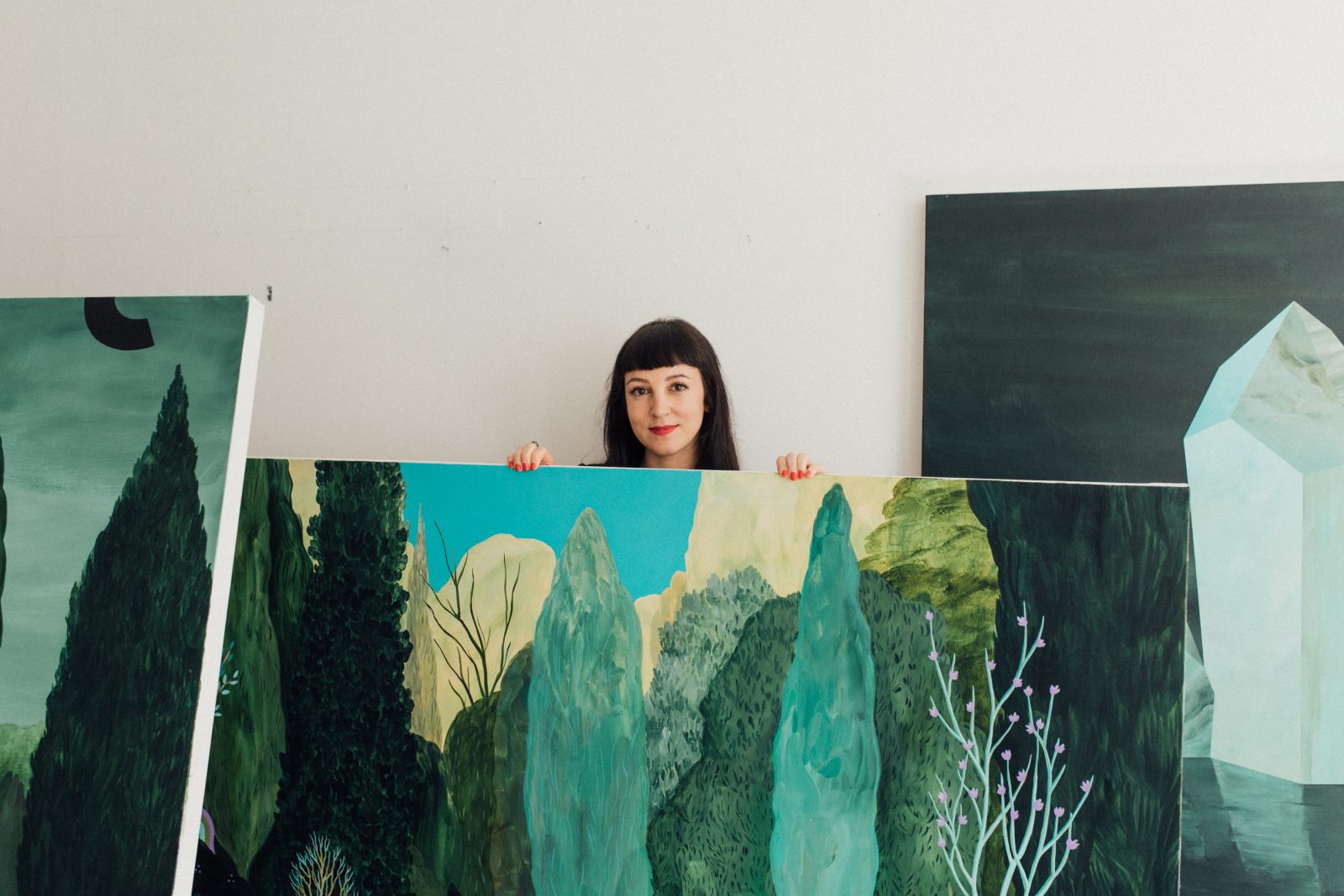
Tell me a bit about yourself, how long have you considered yourself an artist and what are you currently working on?
I am a Canadian painter, living in Vancouver, BC. I was born in England and grew up in Ontario. My subject matter tends toward the surreal and I like to hint at existentialism and perception. My primary medium is acrylic paint on canvas, but I also like to use wooden panel and make sculptures. I probably started to fancy myself an artist while at art school. I really “fell for” painting and loved everything about it. By the time I graduated in 2002 I knew that I really wanted to see it through career-wise—though I had no idea what that meant or what that would look like and it certainly took me a while to get it going. I’ve been lucky to have some grant funding from Canada Council for the Arts and this has really offered me practical support in my development with my Antarticus (icebergs) series as well as my Cave Paintings series.
Currently I am working on my Fabled series as I wrap up for an exhibition that opens at the end of May 2018. All of these pieces are quite narrative and there’s been a return to some dark, saturated green palettes which has been exciting. Also many of these pieces are on the bigger scale 4 ft x 5 ft -ish and a little bigger. I have so much respect for artists that work on a large scale – it can be such a daunting process! I hope to get a little faster and more confident at this scale. The exhibition at The Reach Gallery Museum is called Tales Untold and features writers responding the work of three artists including myself. It’s going to be a fascinating exhibition and one of the writers responding to my work is Zsuzsi Gartner whose writing is really well-matched to my art – really creative! I’ve loved her writing since my early 20’s when she released her book All The Anxious Girls On Earth so this is a real dream come true for me.
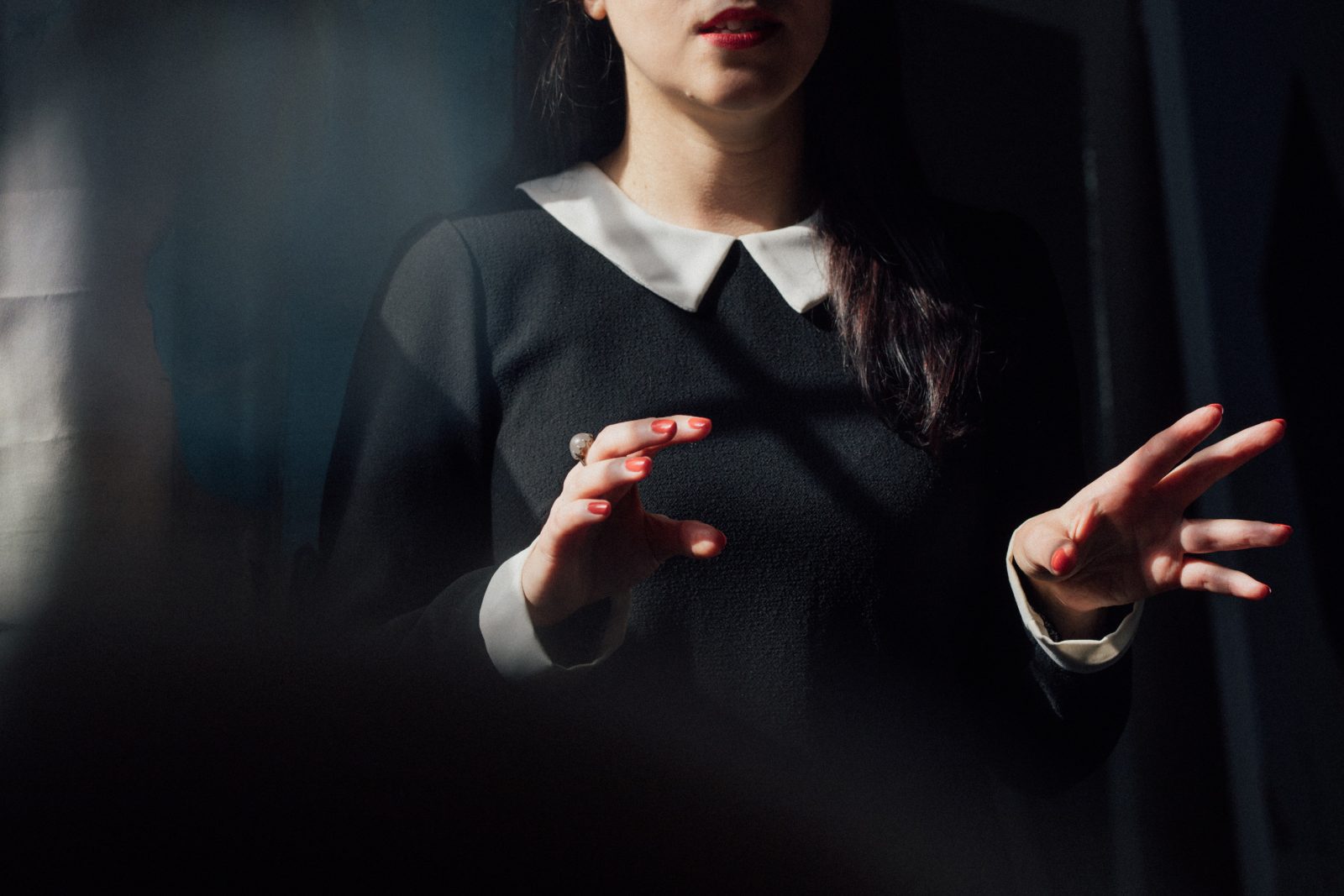
I’m so interested in your Fabled series. Can you tell me a bit more about how you came to be inspired by the writings of Campbell and what his ideas about the self and mythology have meant for your own artistic journey?
When I started working on my last series, Cave Paintings, I started to look into the Jung concept of the “shadow self”. I was interested in how challenging experiences can unite us with our “shadow self”, allowing us to transform into a stronger and more “whole” version of ourselves. This lead me into reading about Joseph Campbell’s “Hero’s Journey” which breaks down all stories into their symbolic and relevant components and also deals with this same idea of transformation. I found Campbell’s writing about the different steps in a hero’s journey to be very fascinating and it resonated with me on a creative level because my work has often been quite narrative and symbolic of similar moments in our own real life journeys. I also found that Campbell’s way of using stories to explain certain concepts made them not only very easy to understand, but also helped me have a deeper and richer understanding.
I think that my own journey as an artist has been overall very lucky and I am grateful for it, but it has had it’s painful moments. I think the hero’s journey is inspiring because these more painful or challenging times hold more purpose as they help break the ego and allow transformation to occur. I’ve become a better artist and a more savvy business person because of some of the less-than-positive situations I’ve been caught up in. As a good friend said to me once when I was feeling fraught “You’ll thrive because of this and not in spite of this”.
Shapes seem to be very popular these days, but you use them in ways that are really unique. What prompted you to include them in your work?
I think the first time I began to use shapes in the way I’ve come to be recognized for I was really on the hunt for a way to visually interrupt my images. I was a bit bored with my work so introducing these shapes felt risky and liberating at the same time—they made me look at my work with a little more wonder and I hoped others would question their presence or, alternately, think of them as an absence of information. I explored this in my 2011 series Like A Great Black Fire. Later they became portals. In the portal paintings I wanted to make a sharp visual contrast to the soft pastel landscapes with a big black portal shape. With these portal paintings I felt like they were echoing what happens when we look at art—it pulls us into another place and out of our reality. A funny side note: you can see one of my larger portal paintings in the 50 Shades movie sequels…occasionally I get bashful emails from people about that.
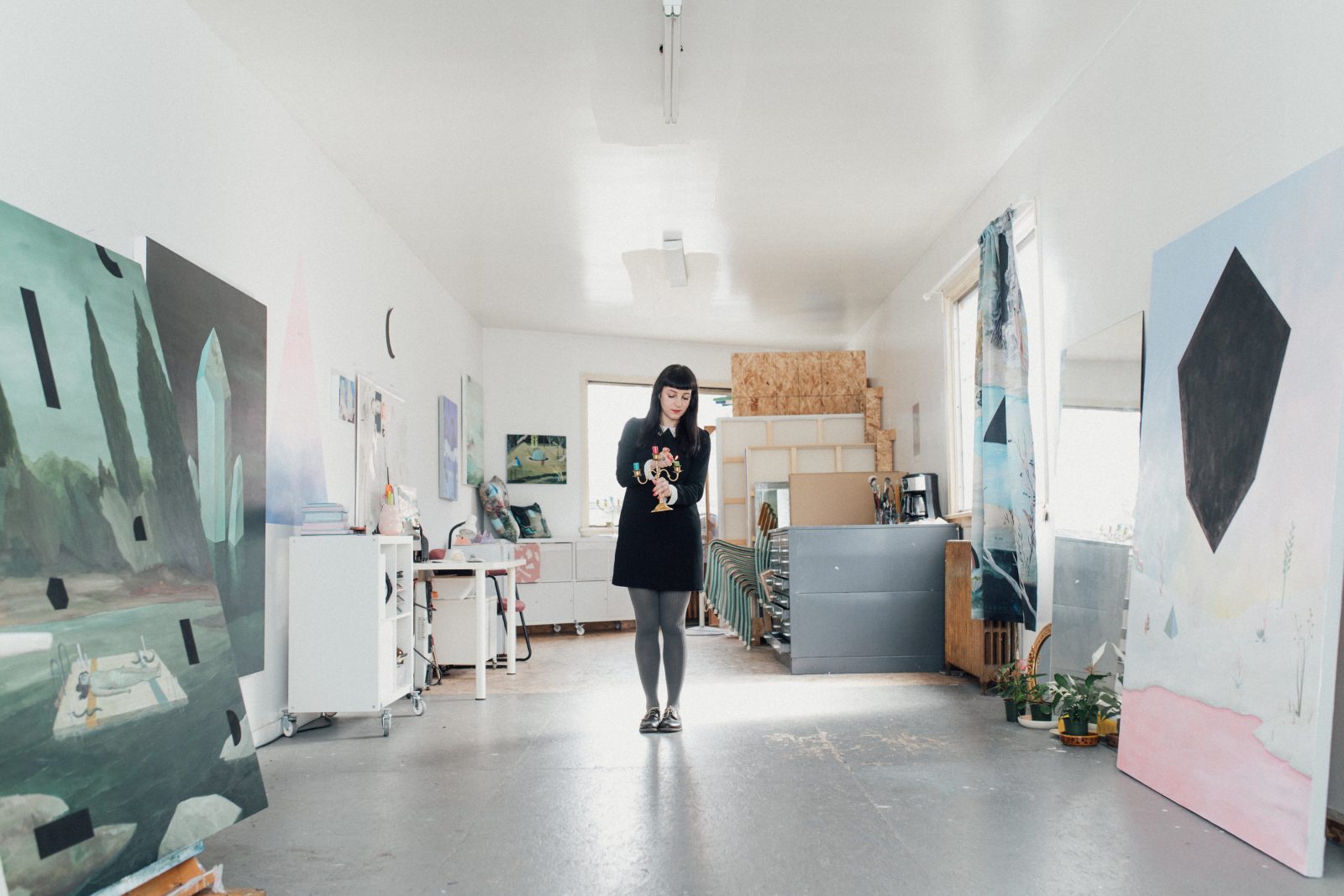
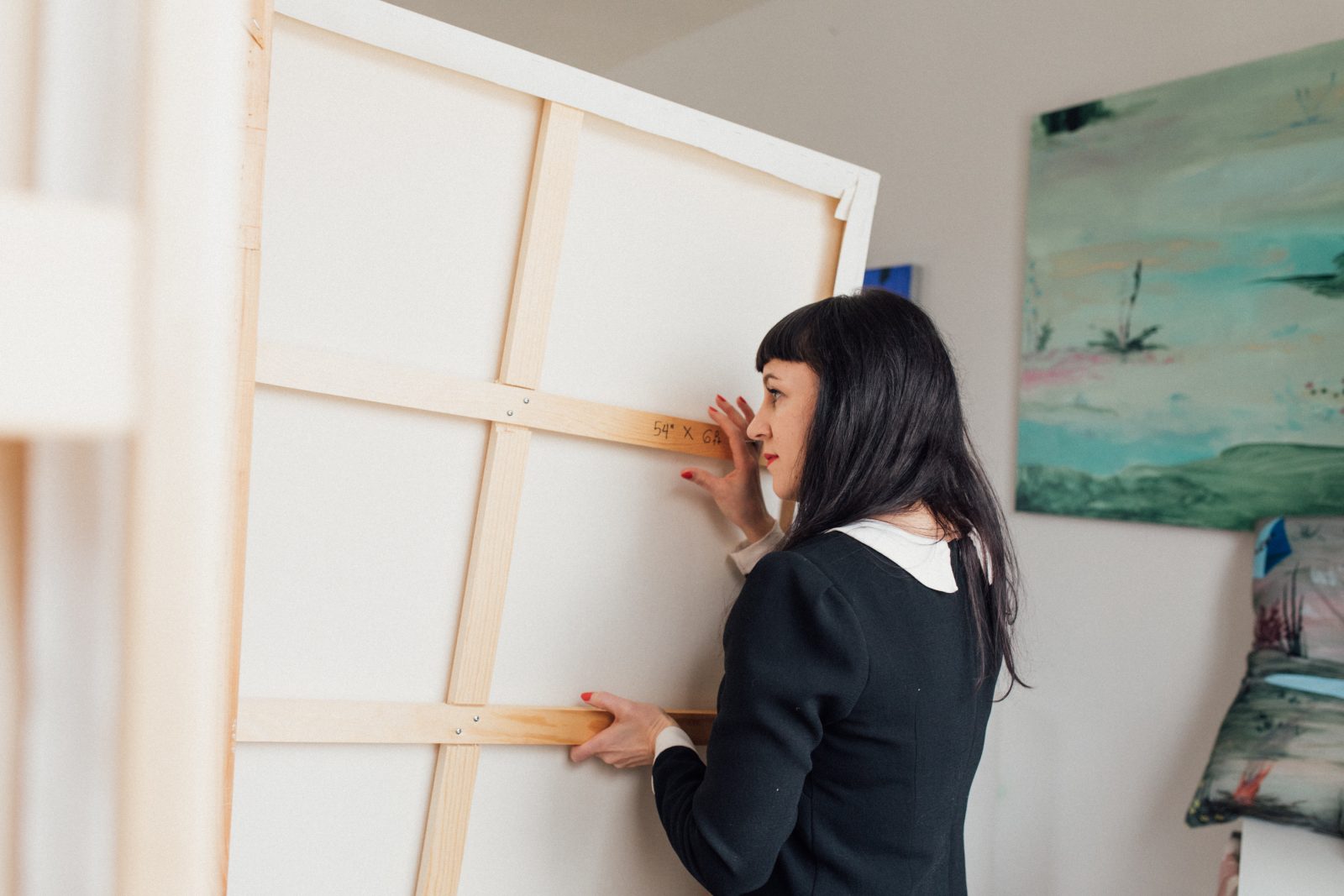
Tell me about your relationship with color. I love the stark, black shapes that pop out of your dreamscapes. What do these mean to you and what do you want them to mean to the audience who views them?
I have comes a long way with colour. When I graduated art school I had reduced myself to black and white. I produced etching/prints and black watercolours and ink drawings back then, but I think that it was a good way to learn how to make images with contrasting values and tones. Very slowly I began to create works that explored different colour concepts, often relying on only using two dominant colours to create a harmonious outcome. I think colour is quite emotional. Colour will bring up certain feelings for me when I use it.
As far as the pastel colour palette I often use, for me, that feels euphoric and then the use of a black portal shape feels like being grounded in that euphoria. I enjoy the balance of light and dark like that. Using darker colours makes me feel intrigued, they seem mysterious and yin-like, hiding things instead of illuminating them.
There’s a surreal element to your work that balances the line between macabre and playful. Why do you think you’re drawn to this in-between place?
I think the space between the macabre and the playful is a good way to put it and it exists mostly in my more narrative work that involves a human figure. It echos some of life’s absurdity. In some of these works there is even a little humour. For me, these opposites balance each other out and reign each other in.
I really explored the relationship of playful vs. macabre in a book that I wrote and illustrated called Eerie Dearies: 26 Ways to Miss School. It’s an ABC book featuring images of absent school girls teleporting, surviving a zombie apocalypse, suffering with ennui, etc. It was a really fun project and really interesting to have art circulated via book format. It has a life of it’s own and seems to pop up everywhere. Last year I was visiting the Museum of Contemporary Art in Sydney Australia and I found it at their book shop. I felt a tiny bit famous.
I also released a set of iPhone stickers called Messages From The Void with Criteri and it was really funny to see how people would use my characters and images from my art to express this dark sense of humour. It’s nice to see that people understand the humour in my work and to see them get creative with that was awesome and just really hilarious.
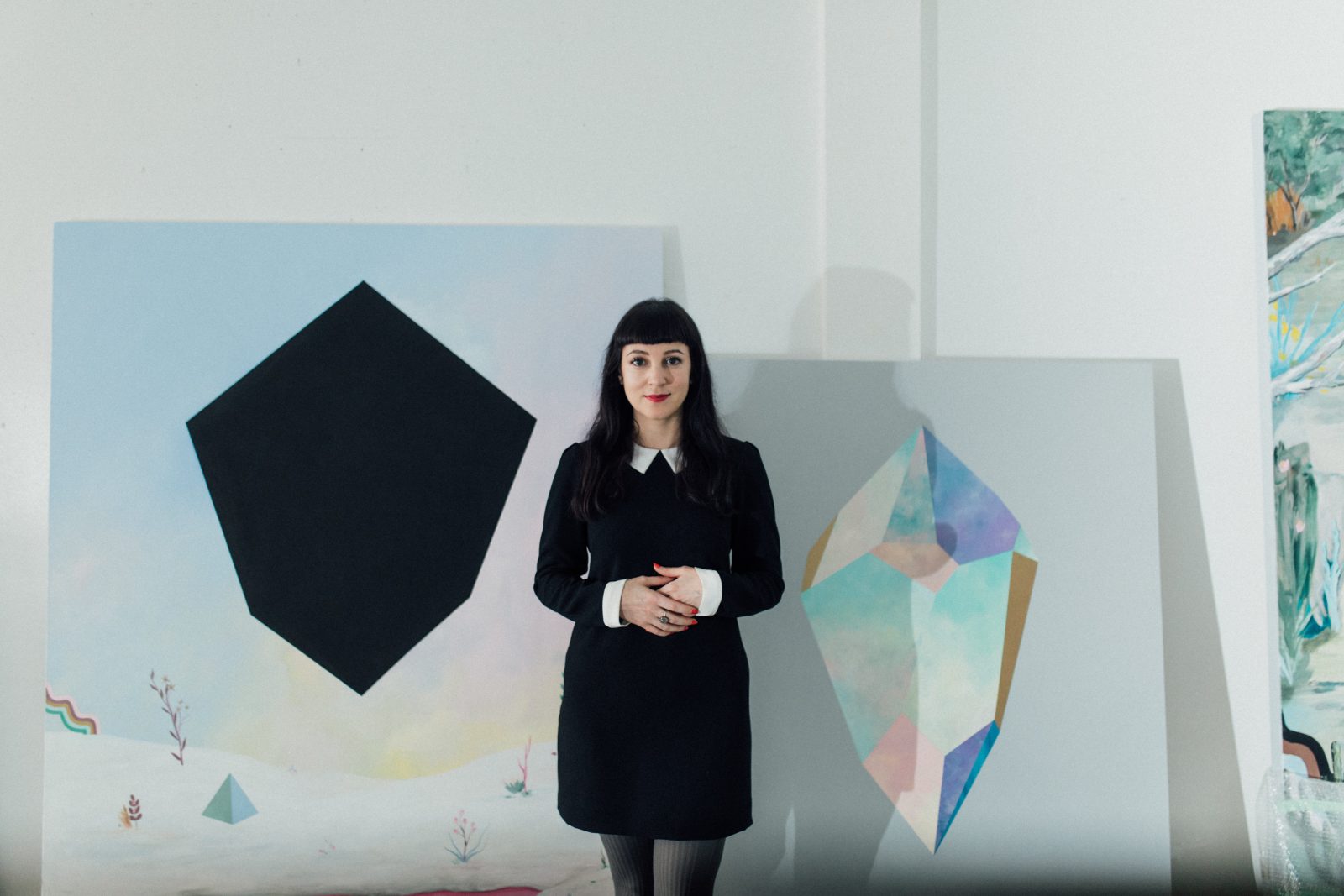
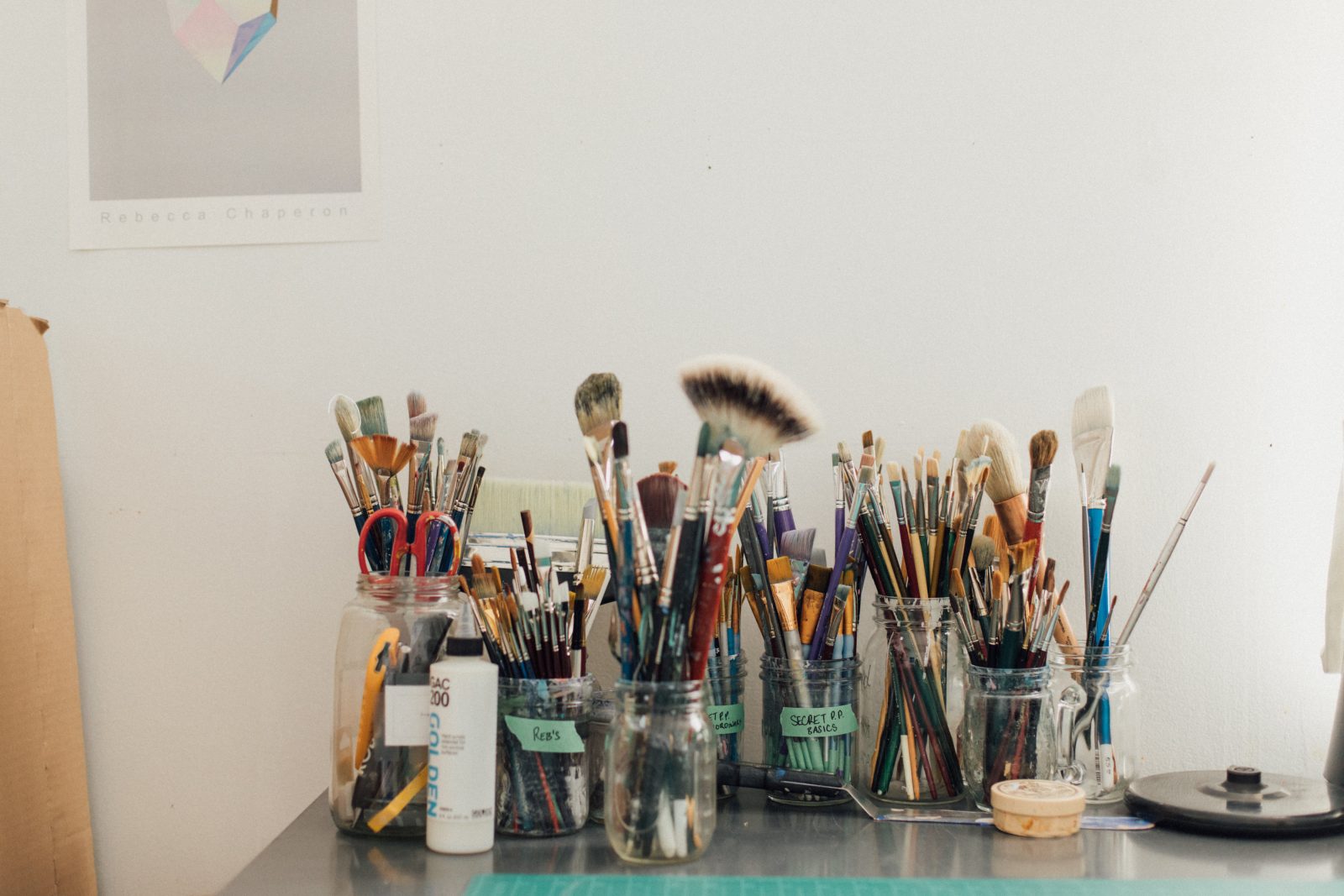
Your IG has lots of work from other artists that inspire you. What are some of your current favorites?
Yes! I really love to post the work of other artists on my instagram. I try to post art in other mediums (i.e. lots of photography) to help make it more obvious that it isn’t my own work, because people don’t read the captions where I include photo credit and then repost with credit to me (super awkward LOL)!
I am always discovering artists I love on Instagram and also on Tumblr. Actually Tumblr is my favourite social media for looking at random visual content. It’s a real mix of stuff there including a lot of film stills, which I love. Art I am digging this past couple of months on insta: Jules de Balincourt , George Greeves, Daniel Kordan, and my friend Genevieve Dionne’s recent ceramic drawing are truly wonderful.
What has been your proudest artistic moment thus far?
That’s a tough question—there have been a lot of different proud moments. I think the first time I had a successful grant application was a stand-out for me because even though I kept applying every year I still had a voice in my head telling me that it would never happen. The proposal that I wrote for that grant was the first time I wrote about my work from a more personal place and I allowed myself to express my more emotional and poetic side, so the acknowledgement felt really good. I felt very supported and it helped me prove to myself that it was worth putting myself in a position where I was letting other people have the opportunity to reject me. I think that is a scary thing to , but the rewards are great. Getting that first grant really helped me to shift my perspective—I remember being so shook that it had actually worked out!
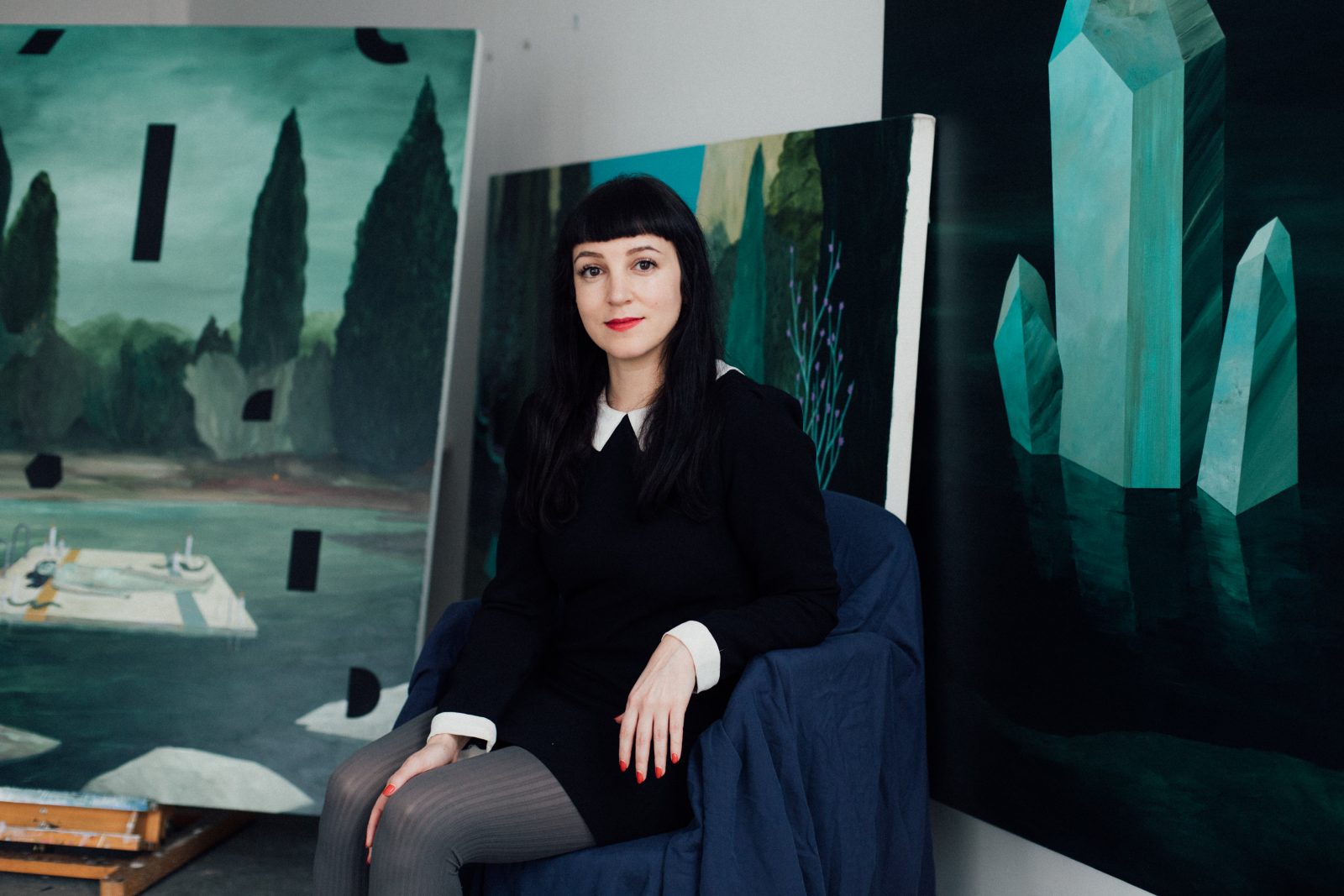
Photos by Lindsay Elliott
Comments